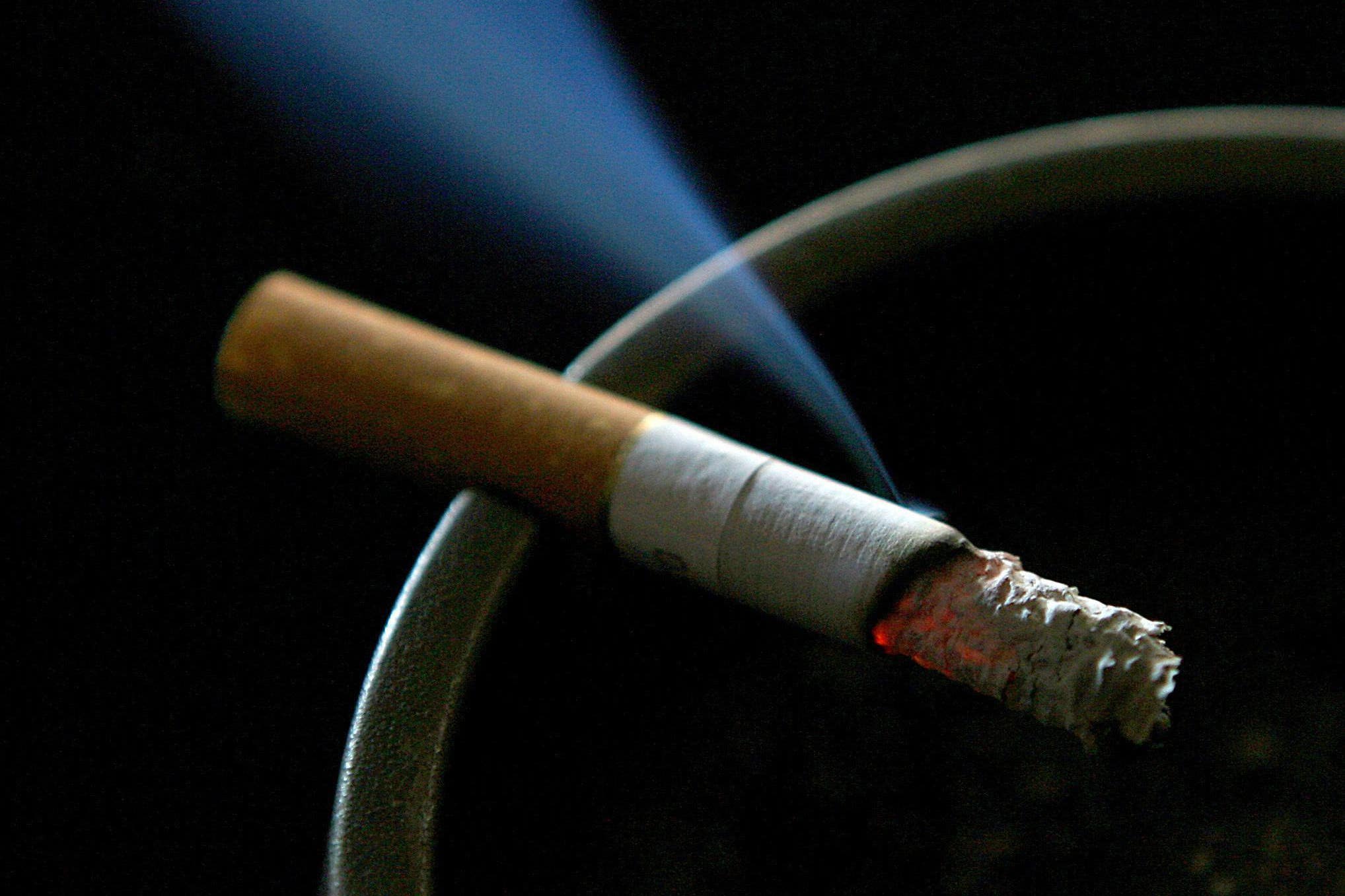Brains of teenage smokers may be different than non-smokers, study suggests
Researchers say that any way of identifying who is more likely to develop a smoking habit could help save millions of lives.

Your support helps us to tell the story
From reproductive rights to climate change to Big Tech, The Independent is on the ground when the story is developing. Whether it's investigating the financials of Elon Musk's pro-Trump PAC or producing our latest documentary, 'The A Word', which shines a light on the American women fighting for reproductive rights, we know how important it is to parse out the facts from the messaging.
At such a critical moment in US history, we need reporters on the ground. Your donation allows us to keep sending journalists to speak to both sides of the story.
The Independent is trusted by Americans across the entire political spectrum. And unlike many other quality news outlets, we choose not to lock Americans out of our reporting and analysis with paywalls. We believe quality journalism should be available to everyone, paid for by those who can afford it.
Your support makes all the difference.Rule-breaking under-age smokers may have different brains than their teenage peers who do not smoke, a new study suggests.
The findings indicate that levels of grey matter – the brain tissue that processes information – in two parts of the brain may be linked to a desire to start smoking during adolescence and the strengthening of nicotine addiction.
Researchers say that any way of identifying who is more likely to develop a smoking habit could help save millions of lives.
A team of scientists, led by the universities of Cambridge and Warwick in the UK and Fudan University in China, analysed brain imaging and behavioural data of more than 800 young people at the ages of 14, 19 and 23.
In our study, reduced grey matter in the left prefrontal cortex is associated with increased rule-breaking behaviour as well as early smoking experiences
On average, teenagers who started smoking by the time they were 14 had markedly less grey matter in a section of the left frontal lobe linked to decision-making and rule-breaking.
Professor Trevor Robbins, co-senior author from Cambridge’s Department of Psychology, said: “Smoking is perhaps the most common addictive behaviour in the world, and a leading cause of adult mortality.
“The initiation of a smoking habit is most likely to occur during adolescence.
“Any way of detecting an increased chance of this, so we can target interventions, could help save millions of lives.”
He added: “In our study, reduced grey matter in the left prefrontal cortex is associated with increased rule-breaking behaviour as well as early smoking experiences.
“It could be that this rule-breaking leads to the violation of anti-smoking norms.”
While brain development continues into adulthood, grey matter growth peaks before adolescence.
According to the researchers, low grey matter volume in a particular area at the front left side of the brain may be an inherited biomarker (molecule) for nicotine addiction.
This could have implications for prevention and treatment.
The scientists also found that the opposite, right part of the same brain region also had less grey matter in smokers.
According to the study, once a nicotine habit takes hold, grey matter in the right frontal lobe shrinks, which may weaken control over smoking by affecting the way pleasure is sought and managed, something called hedonic motivation.
Excessive loss of grey matter in the right brain was also linked to binge drinking and marijuana use, the researchers found.
They say that the findings point to a damaged neurobehavioural mechanism that can lead to nicotine use starting early and becoming locked into long-term addiction.
Some estimates suggest that annual deaths from cigarettes could reach eight million worldwide by the end of the decade.
Co-author Prof Barbara Sahakian from Cambridge’s Department of Psychiatry said: “The ventromedial prefrontal cortex is a key region for dopamine, the brain’s pleasure chemical.
“As well as a role in rewarding experiences, dopamine has long been believed to affect self-control.
“Less grey matter across this brain region may limit cognitive function, leading to lower self-control and a propensity for risky behaviour, such as smoking.”
The study used data gathered from sites in the UK, Germany, France and Ireland.
Researchers compared brain imaging data for those who had smoked by age 14 with those who had not, and repeated this for the same people at ages 19 and 23.
When the scientists looked at an area of the brain called the right ventromedial prefrontal cortex, those who smoked from age 14 as well as those smoking from age 19 both ended up with excessive grey matter loss in the right frontal lobe.
The study found that for the right prefrontal cortex, 19-year-old smokers who did not start during adolescence had similar grey matter levels at age 14 to those who never smoked at all.
This suggests a rapid reduction in the right ventromedial prefrontal cortex only begins when people start smoking.
Data at age 23 showed that grey matter volume in the right prefrontal cortex shrank at a faster pace in those who continued to smoke.
Questionnaires conducted as part of the study indicate less grey matter in the left prefrontal cortex was associated with novelty seeking, particularly disorderly and rule-breaking behaviour.
Reduced grey matter volume in the right prefrontal cortex was linked to sensation seeking only.
The study used data from the IMAGEN project – a European research project examining how biological, psychological, and environmental factors during adolescence may influence brain development and mental health, and is published in the journal Nature Communications.